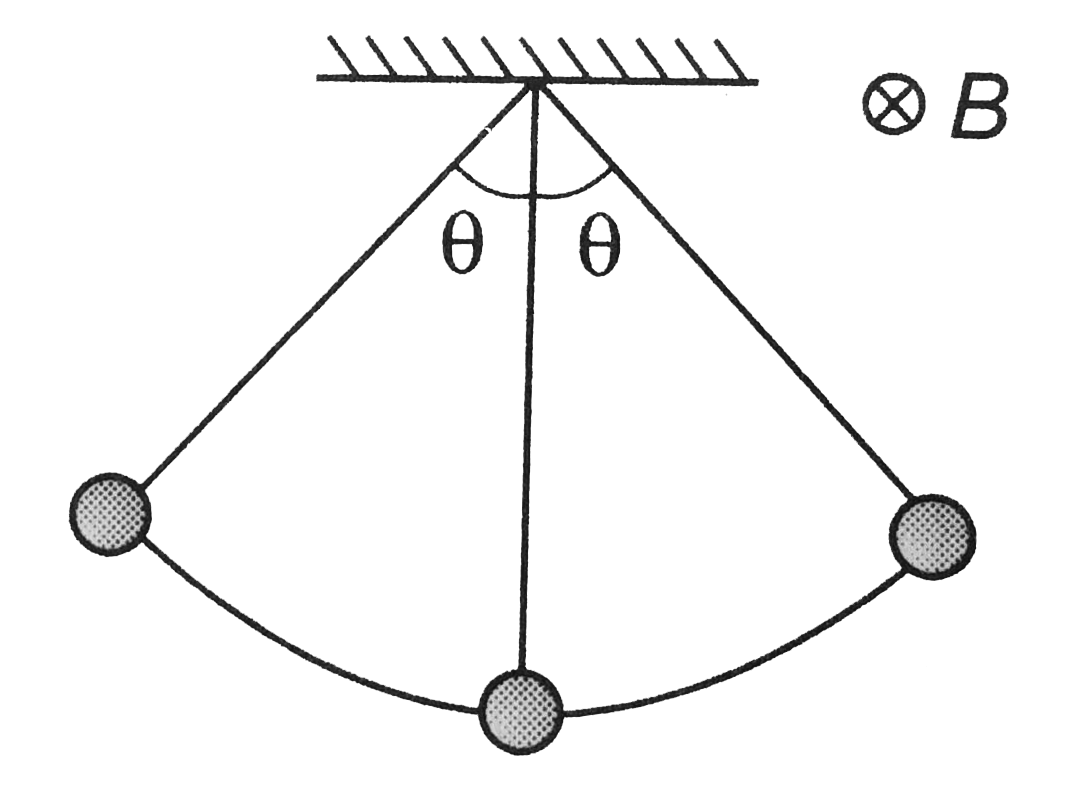On what factors does the period of oscillation of a bar magnet in a uniform magnetic field depend.
To determine the factors on which the period of oscillation of a bar magnet in a uniform magnetic field depends, we can analyze the formula for the period of oscillation.
1. Understanding the Formula:
The period of oscillation T of a bar magnet in a uniform magnetic field is given by the formula:
T=2π√Im⋅B
where:
- T = period of oscillation
- I = moment of inertia of the bar magnet
- m = magnetic moment of the bar magnet
- B = magnetic field strength (magnetic induction)
2. Identifying the Factors:
From the formula, we can identify the factors that affect the period of oscillation:
- Moment of Inertia (I): The period T is directly proportional to the moment of inertia. This means that as the moment of inertia increases, the period of oscillation also increases.
- Magnetic Moment (m): The period T is inversely proportional to the square root of the magnetic moment. Therefore, an increase in the magnetic moment will lead to a decrease in the period of oscillation.
- Magnetic Field Strength (B): The period T is also inversely proportional to the square root of the magnetic field strength. Thus, an increase in the magnetic field strength will result in a decrease in the period of oscillation.
3. Conclusion:
Therefore, the period of oscillation of a bar magnet in a uniform magnetic field depends on the following three factors:
- Moment of Inertia I
- Magnetic Moment m
- Magnetic Field Strength B
Summary of Factors:
- Moment of Inertia (I): Directly proportional to T
- Magnetic Moment (m): Inversely proportional to T
- Magnetic Field Strength (B): Inversely proportional to T
The period of oscillation T of a bar magnet in a uniform magnetic field is given by the formula:
T=2π√Im⋅B
where:
- T = period of oscillation
- I = moment of inertia of the bar magnet
- m = magnetic moment of the bar magnet
- B = magnetic field strength (magnetic induction)
From the formula, we can identify the factors that affect the period of oscillation:
- Moment of Inertia (I): The period T is directly proportional to the moment of inertia. This means that as the moment of inertia increases, the period of oscillation also increases.
- Magnetic Moment (m): The period T is inversely proportional to the square root of the magnetic moment. Therefore, an increase in the magnetic moment will lead to a decrease in the period of oscillation.
- Magnetic Field Strength (B): The period T is also inversely proportional to the square root of the magnetic field strength. Thus, an increase in the magnetic field strength will result in a decrease in the period of oscillation.
Therefore, the period of oscillation of a bar magnet in a uniform magnetic field depends on the following three factors:
- Moment of Inertia I
- Magnetic Moment m
- Magnetic Field Strength B
- Moment of Inertia (I): Directly proportional to T
- Magnetic Moment (m): Inversely proportional to T
- Magnetic Field Strength (B): Inversely proportional to T
Topper's Solved these Questions
- BOOK - AAKASH SERIESCHAPTER - MAGNETISMEXERCISE - PROBLEMS (LEVEL-I)21videos
MAGNETISM
- BOOK - AAKASH SERIESCHAPTER - MAGNETISMEXERCISE - PROBLEMS (LEVEL-II)16videos
MAGNETISM
- BOOK - AAKASH SERIESCHAPTER - MAGNETISMEXERCISE - EXERCISE (SHORT ANSWER QUESTIONS )6videos
MAGNETISM
- BOOK - AAKASH SERIESCHAPTER - LOGIC GATESEXERCISE - Exercise (Very Short Answer)10videos
LOGIC GATES
- BOOK - AAKASH SERIESCHAPTER - MOTION IN A PLANEEXERCISE - EXERCISE-3 (Circular Motion)7videos
MOTION IN A PLANE
Similar Questions
On what factors does the period of a simple pendulum depend ?
View SolutionA simple pendulum with charge bob is oscillating as shown in the figure. Time period of oscillation is T and angular ampliltude is θ. If a uniform magnetic field perpendicular to the plane of oscillation is switched on, then
 View Solution
View Solution
Knowledge Check
- Question 1 - Select One
The time period of oscillation of a bar magnet suspended horizontaliy along the magnetic meridian is T0. If this magnet is replaced by another magnet of the same size and pole strength but with double the mass, the new time period will be
AT02BT0√2C√2T0D2T0 - Question 2 - Select One
In a uniform magnetic field, the field lines are :
AcurvedBparallel and equidistant straight linesCparallel, but non-equispaced straight linesDnothing can be said.
A vibration magnetometer consist of two identical bar magnets placed one over the other such that they are mutually perpendicular and bisect each other. The time period of oscillations of combination in a horizontal magnetic field is 4s. If one of the magnets is removed, then the period of oscillations of the other in the same field is
View SolutionA magnet is cut in three equal parts by cutting it perpendicular to its length. The time period of original magnet is T0 in a uniform magnetic field B. Then, the time period of each part in the same magnetic field is
View SolutionThe perio of oscillation of a magnet in vibration magnetometer is 2 sec. The period of oscillation of a magnet whosr magnetic moment is four times that of the first magnet is
View SolutionThe time period of oscillation of a freely suspended bar magnet with usual notations is given by
View SolutionDeduce an expression for torque acting on a bar magnet placed in uniform external magnetic field.
View SolutionThe time period of oscillation of a magnet in a vibration magnetometer is 1.5 seconds. The time period of oscillation of another of another magnet similar in size, shap and mass but having one-fourth magnetic moment than that of first magnet, oscillating at same place will be
View Solution

